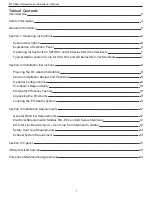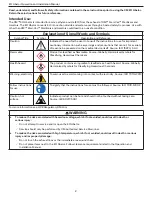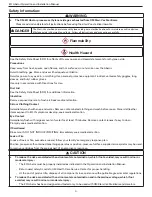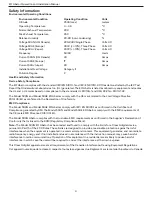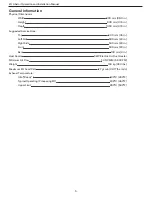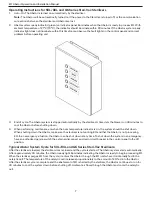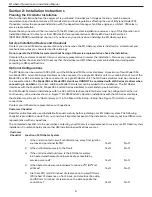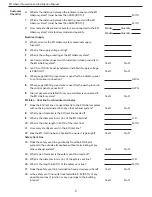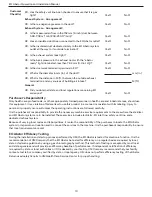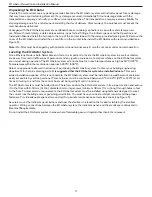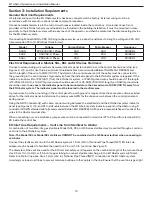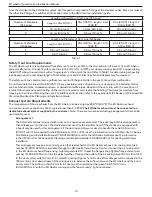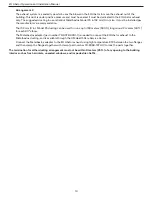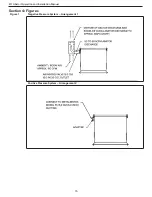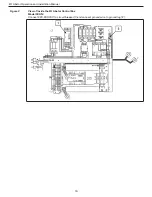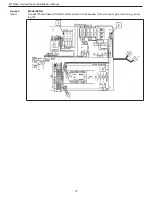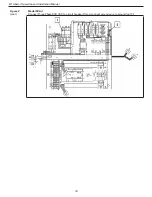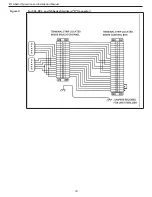
EO Abator Operation and Installation Manual
4
Safety Information:
Environmental Operating Conditions
Environmental Condition
Operating Condition
Units
Altitude
2500 (max)
meters
Operating Temperature
0 – 49
°C
Normal Exhaust Temperature
238
°C
Max Exhaust Temperature
260
°C
Relative Humidity
20-80 (non-condensing)
%
Voltage 50AN (US/Canada)
220-230V Single Phase
Volts AC
Voltage 50AE (Europe)
400V (+/-10%), Three Phase
Volts AC
Voltage 50AJ (Japan)
200V (+/-10%), Three Phase
Volts AC
Frequency
50/60
Hertz
Current 50AN (US/Canada)
30
Amps
Current 50AE (Europe)
17
Amps
Current 50AJ (Japan)
28
Amps
Installation/Over Voltage
Category II
Pollution Degree
2
Health and Safety Information
Device Safety Compliance
The EO Abator complies with the standard IEC/EN 61010-1 and IEC/EN 61010-2-010 as demonstrated by the IEC Test
Report that Underwriters Laboratories Inc. (UL) generated. The EO Abator is listed as Laboratory equipment and carries
the UL and c-UL marks based on compliance to the standards UL 61010A-1 and CSA 22.2 No. 61010-1.92.
The Model 50AN and Model 50AE EO Abators comply with the CE mark related to the Low Voltage Directive
2014/35/EU as confirmed in the Declaration of Conformity.
EMC Compliance
The Model 50AN and Model 50AE EO Abators comply with IEC/EN 61326-1 as confirmed in the Certificate of
Compliance generated by 3M. The Model 50AN and Model 50AE EO Abators comply with the EMC requirements of
the CE mark EMC Directive 2014/30/EU.
The Model 50AN Abator complies with the Australian EMC requirements as confirmed in the Supplier’s Declaration of
Conformity that is linked to the RCM (Regulatory Compliance Mark).
Note:
The Model 50AN EO Abator has been tested and found to comply with the limits for a Class A digital device,
pursuant to Part 15 of the FCC Rules. These limits are designed to provide a reasonable protection against harmful
interference when the equipment is operated in a commercial environment. This equipment generates, and can radiate
radio frequency energy and, if not installed and used in accordance with the instruction manual, may cause harmful
interference to radio communications. Operation of this equipment in a residential area is likely to cause harmful
interference in which case the user will be required to correct the interference at their own expense.
This Class A digital apparatus meets all requirements of the Canadian Interference-Causing Equipment Regulations.
Cet appareil numerique de la classe A respecte toutes les exigences due Reglement sur le materiel brouilleur du Canada.


